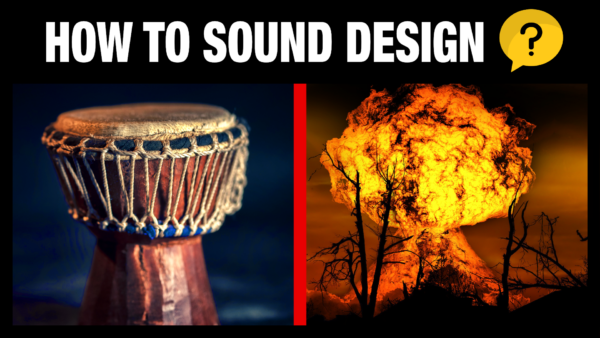 Do you want to learn how to sound design big, powerful and epic impact sounds?
Do you want to learn how to sound design big, powerful and epic impact sounds?
Epic impacts, as I call these types of sound effects, have tremendous power in the low end, a massive deep punchy attack, and a huge explosive-like tail of the sound. But you can shape it in different ways, from low deep earth quake rumbles, to meteor strikes, to explosions etc.
Get ready for massive percussive hits, because you are now going to learn how to create your own epic impact sound effects, to use in your music compositions.
1 – Sounds
To create epic impact sounds, you need to use several layers of different percussive hits, samples or synthesized sounds. It all depends on what kind of epic impact you want, a punchy hit, a deep rumble or a war strike explosion. But to get you started I have some suggestions of sounds to use as layers:
- Low Percussion (Orchestral Big Drums)
- Deep Synth Percussion (808, 909)
- Explosive Sounds (Explosion/Earth Quake Samples)
- Punchy Samples (Smacks, Slaps, Claps, Snares)
- Group Bangs (Group Stomps, Ensemble Low Drums)
2 – Filters/Envelopes
Since you are using layers, you can use different envelope settings for different purposes in your overall epic impact sound. From short attack/sustain to make a punchy sound, to slow attack/release for rumbles, deep sustains. It is the final sound that matters. For the filters you obviously want to focus on the low-end range, but you also want to have some of the mids left to leave some of the punch and explosive destructive aspects.
3 – Power FX
Epic impacts need to have a lot of power, and a lot of low end. The first aspect of this is to tune down some layers to make them deeper. For example, if you use a group stomp sample, try pitching it down several semitones. Then it’s time for the most fun aspect, which is to add dirty distortion and saturation. I recommend that you do this on the individual layers that make up your epic impact sound, and make sure you keep the lowest bass frequencies clear.
4 – Depth FX
Another important part of the final epic impact sound, is the depth, stage and stereo field. Just like with distortion, you want to add reverb, and adjust stereo width on the individual layers first. In most cases, the lowest frequency layers should most often be more in the centre with less stereo information and less reverb tail.
5 – Final Mix
To make sure you have massive power in your final output, you want to use an effect chain on the mixing group of your sound as well. Here I advice you to first add heavy compression to smash the dynamics and glue the sound together. If you want to keep some of the dynamic air in the sound, you can use the compressor in parallel mode, mixing the dry signal with the heavily compressed signal. Then you should add a final tone EQ to shape the overall sound. I recommend an analog EQ, like a a console EQ or tube EQ or anything with some character to it. You may want to add a final overall glue reverb as well, but remember to keep the lowest frequencies away from the reverb output. And finally you should add a limiter or maximizer to squeeze the sound for more power, as well as getting all of that rumble and release tail out.
Congratulations!
You have now learned the foundations, guidelines and tips on how to sound design epic impacts to use in your music productions. Now take action, and use what you have learned in this class, to create your epic hits and impact sounds from scratch.
